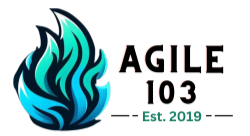Every Agile practitioner eventually encounters the invisible weight slowing down delivery: technical debt. Whether it’s quick fixes, legacy systems, or rushed solutions, technical debt can erode team velocity, increase risks, and hinder innovation. Yet, when managed proactively, it can become a powerful lever for learning and improvement.
This session will explore how Agilists can identify, communicate, and systematically reduce technical debt while maintaining momentum on business goals.
What is Technical Debt?
Ward Cunningham, one of the authors of the Agile Manifesto, coined the term to describe the “extra work” created when a quick solution is chosen instead of a long-term approach. Just like financial debt, technical debt accrues “interest” in the form of slower development, higher defect rates, and reduced flexibility.
Martin Fowler explains that not all technical debt is bad, some of it is deliberate and strategic, but it becomes harmful when ignored.
Why Technical Debt Matters for Agile Teams
Agile thrives on adaptability, but unmanaged technical debt undermines agility by:
-
Reducing velocity: Teams spend more time fixing issues than delivering value.
-
Increasing risk: Bugs and instability creep into production.
-
Eroding morale: Developers grow frustrated working around fragile systems.
-
Blocking innovation: Outdated architectures limit the ability to pivot quickly.
The Agile Alliance emphasizes that acknowledging and managing debt is key to sustaining agility.
Strategies for Managing Technical Debt
1. Make Debt Visible
Integrate technical debt into your backlog. Use labels in Jira, Azure DevOps, or Trello to track debt alongside features.
2. Balance Debt with Delivery
Apply the “20% rule” where a portion of each sprint is allocated to addressing technical debt. This ensures gradual improvement without derailing commitments.
3. Prioritize with Business Context
Not all debt needs immediate repayment. Use frameworks like WSJF (Weighted Shortest Job First) to evaluate debt items against value delivery.
4. Invest in Automation
Automated testing, continuous integration, and code quality tools (like SonarQube or Codacy) reduce the chance of debt piling up unnoticed.
5. Educate Stakeholders
Help non-technical stakeholders understand debt as a business risk, not just a technical nuisance. Compare it to financial debt to make the impact relatable.
Practical Tools and Techniques
-
SonarQube: Provides visibility into code quality and technical debt ratio.
-
Codacy: Helps automate code reviews and track maintainability.
-
Atlassian Jira: Allows teams to track debt within the same system as user stories.
How This Session Works
Participants will dive into:
-
Case studies on how teams turned debt management into competitive advantage.
-
Frameworks to measure debt and communicate it to leadership.
-
Group exercises on balancing new features with repayment strategies.
Don’t let technical debt silently drain your team’s energy and value delivery. Join our Technical Debt Management for Agilists session to learn practical strategies for identifying, tracking, and paying down debt without losing focus on business outcomes.
Register now.
Turn technical debt into a driver of agility.
